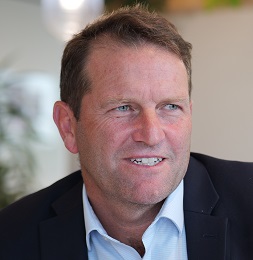So far this decade we have seen the un-imaginable become not just imaginable, but all too real. While the world has rightly focused on their humanitarian impact, COVID lockdowns, the sharp rise in climate change-related natural disasters and the tragic conflicts that continue to play out in Ukraine and Gaza have all had an economic consequence too. Particularly so, as they have followed a decade of slow, uneven economic recovery from the 2008 Global Financial Crisis.
Following the pandemic, we saw fiscal and monetary stimuli deliver giddy recoveries for global economies. But after the party invariably comes the hangover, and so it was of little surprise to see this create an inflation headache the world had not experienced for decades. Even as inflation pressures have eased, this has not been quite to the extent that central bankers will feel they have successfully navigated this particular challenge.
So as we now ponder the range of outcomes 2024 may bring for markets around the globe and here in New Zealand, which are complicated further by the rapid emergence of new technologies like AI and the push to accelerate the energy transition away from fossil fuels, it does feel that we are at a time of significant economic transition and also uncertainty.
The global view
While the whole world has had to face up to the same challenges, countries’ individual, tailored responses have seen them move through the stages of economic growth, inflation and interest rate settings at differing speeds.
The US is faring better than most thanks largely to consumer confidence and a resilient labour market. Notwithstanding consumption pressure coming from softer employment and the resumption of student loan repayments, the US economy is in good shape, which is important as it remains an economic truism that “when the US sneezes, the rest of the world catches a cold!”
Asia has also stood up well to higher interest rates, with the key export economies of South Korea, Taiwan and Singapore buoyed by improving global demand for their goods and services. This demand has also created a more positive outlook for Asia’s emerging markets, and those of Eastern Europe. However, European growth has slowed, having been hit harder by the impact Russia’s invasion of Ukraine has had on energy prices. European inflation has come back sharply in recent months though, leaving central banks there in a position to consider cutting interest rates.
Overall softer economic growth will make earnings growth a challenge for companies—but the good news for investors is that most equity markets have already priced in a lot of this expected tepidity. Valuations around the world are more or less neutral, or near to long-term averages, with the notable exception of a few mega-cap US companies in the tech and communications sectors.
If global economies can outperform the rather low expectations for growth next year, then equities could feasibly post another double-digit gain. But this will require a broadening out of markets, whereby small and mid-cap companies successfully navigate the transition to the post-COVID world.
What to expect here in New Zealand
If the global economy was a cycle race, the black jersey of Aotearoa New Zealand would be nestled somewhere in the middle of the peloton. Given our strong immediate post-COVID recovery, our growth has not been quite as weak as Europe’s; but then neither has it remained as resilient as that of the US and it is still possible that our new government will inherit a shallow recession.
Although inflation has likely peaked, it remains stubbornly sticky and so we can expect restrictive monetary policy to keep interest rates higher for longer. Having been one of the first central banks to start their tightening cycle, the Reserve Bank of New Zealand (RBNZ) increased rates quickly and consistently through 2023 to the point that it felt like Governor Adrian Orr had become the new Ashley Bloomfield (New Zealand’s former director-general of health); the nation waiting on his albeit less frequent proclamations from the lectern. RBNZ policy makers have not had it easy, and with the new government having committed to reviewing their dual mandate, they face a further layer of uncertainty at an already difficult time.
Given the volume of quality defensive companies with relatively high dividend yields, higher for longer interest rates are a significant headwind for our equity markets. Alongside these, our globally-focused export companies will be looking for the global growth story to play out positively, but for the meantime will at least be enjoying a relatively weak New Zealand dollar (NZD).
There are, though, grounds for cautious optimism. The housing market appears to have bottomed out and, looking ahead, should be supported by strong migration figures. However, too swift a house price recovery may convince the RBNZ to keep interest rates higher for longer, which will also serve to cool the outlook for our already weakened construction and manufacturing sectors.
Milk prices for Fonterra farmers are forecast to be in the mid-NZD 7 range. While not great on an inflation-adjusted basis, and lower than one year prior, Fonterra has noted strengthening demand from the key Chinese market which would lead to more upside if continued.
The services part of our economy is expected to keep performing well, so long as migration levels remain high. But this is another area subject to uncertainty should the new government seek to adjust immigration settings to achieve its desired net migration balance.
Alongside this, our once-mighty tourism sector will be driven by global demand. Hosting events such as the FIFA Women’s World Cup has given a massive boost to many tourism providers this year, but like the rest of the economy, and those that offer commentary on it, they will still be cautiously weighing up what the “new normal” looks like in terms of overall demand.



